Get PeakVisor App
Sign In
Search by GPS coordinates
- Latitude
- ° ' ''
- Longitude
- ° ' ''
- Units of Length

Yes
Cancel
Share ×

Scan the QR code and open PeakVisor on your phone
❤ Wishlist ×
Choose
Delete
The Alania National Park is a connecting link between the North Ossetia State Natural Reserve in the east and the Kabardino-Balkarian Highland State Reserve in the west. The park is located in the Irafsky region of the Republic and was established to preserve the unique nature of the southwestern part of the Republic. It has become a platform for conservation, educational, scientific and cultural projects. There have been created conditions for the development of organized tourism and mountaineering in this area.
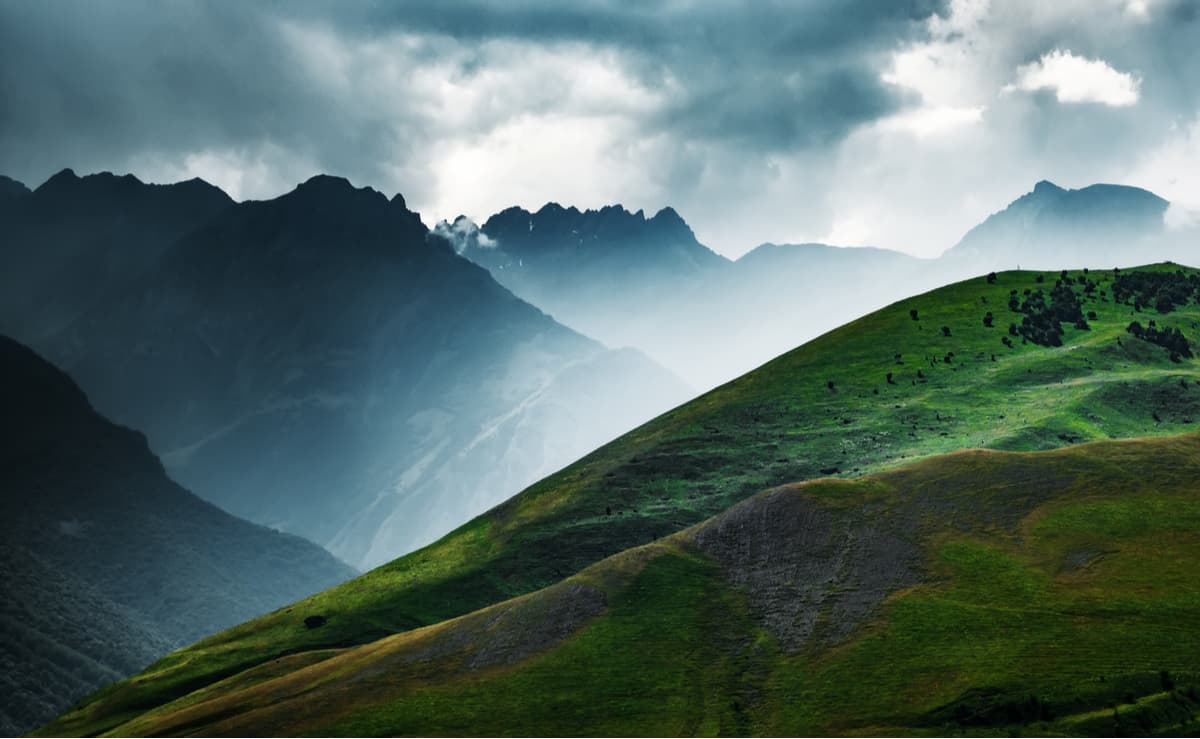
This is a mountainous national park of 549 sq.km. The protected area is bordered by a chain of giant ridges. The highest point is Mount Wilpata (4,649 m). The minimum height of the territory is 1,350 m a.s.l. The park can be accessed solely by the only mountain road laid in the valley of the Urukh River, the road goes through the unique Akhsinta Canyon.
Mountainous Digoria – the homeland for the park and the area where Ossetian Digorians live – has long been known as a centre of tourism and recreation. Mountain climbing, hiking and horse tourism, skiing, paragliding is developed here. The mountaineering complex includes two premises – the mountaineering base Komyart and the mountaineering camp of the Taganrog Radio Engineering Institute, the latter also has the rescue station.
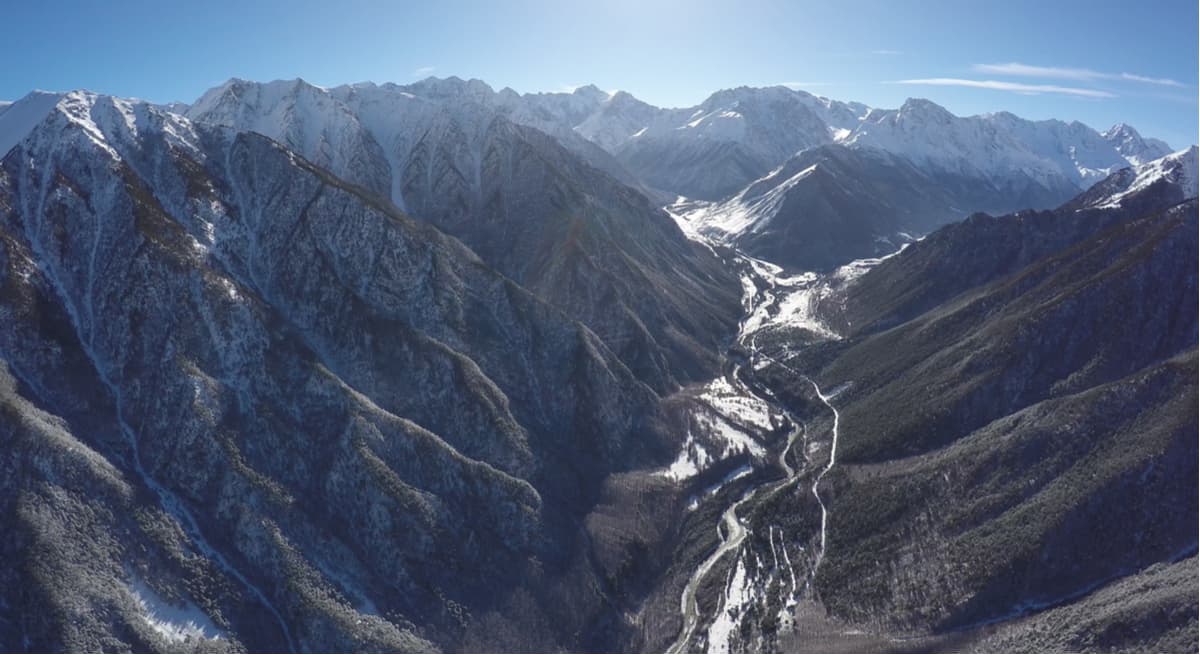
There are highlands with glaciers, classification peaks and passes for mountaineering, hiking, snowshoe walking, skiing. You can also find middle altitude mountains here, favourable for specialized types of rest and sports (equestrian, hiking, water tourism, amateur crafts, etc.), as well as areas for stationary and individual rest (the so-called silence zones).
The park is famous for its glaciers, the largest of them is the Karaugomsky (Karaug). It is up to 14 km long and the total area is 35 sq.km. Another large glacier, the Songutikazsky, is located in the upper reaches of the Songutidon River, a left tributary of the Aigamughidon River. The Bilaghidonsky glacier descends from Sughankhokh Mountain. The continuous monitoring of the glaciers reveals the sad truth – they are degrading in general, most of them are currently retreating, which unfortunately falls with the worldwide trend of glacier current development.
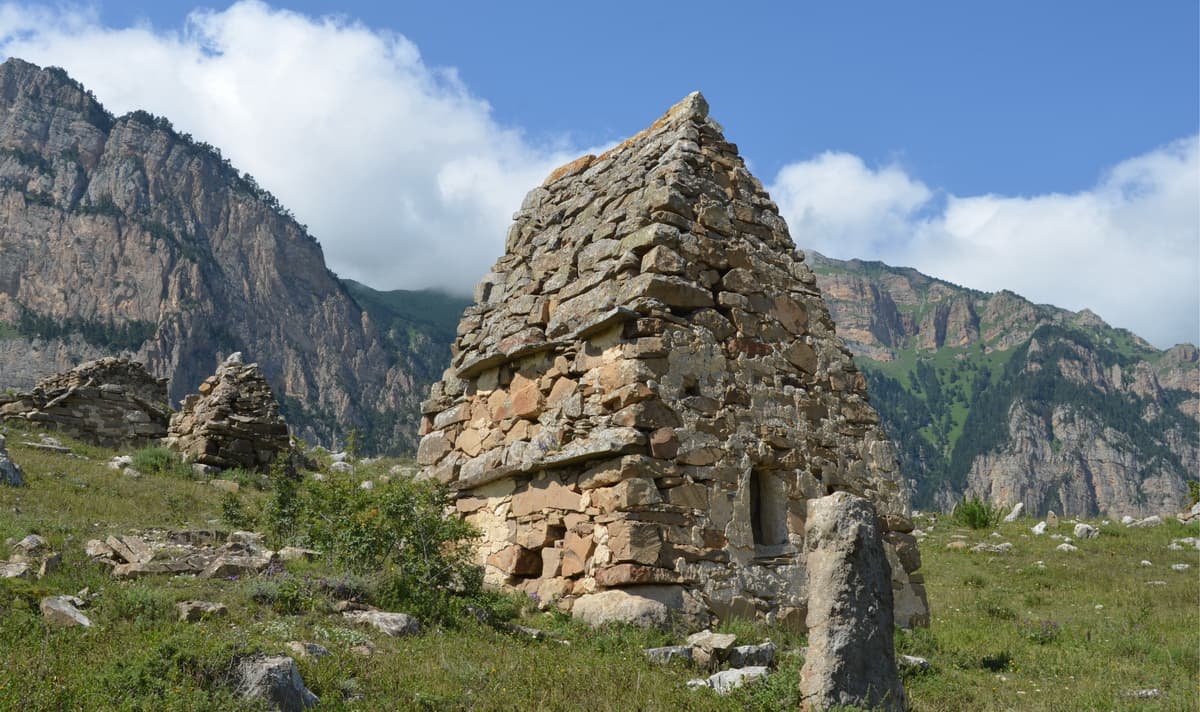
The National Park is the cradle of the Alanian people. Historical monuments of different epochs of the people's residence have preserved in good condition here. The most widespread architectural constructions are the ancestral castle towers in mountain villages. In Galiat village, ancient petroglyphs can be still seen on the walls of dwellings. Ritual burials and sanctuaries of pagan cults are found in the numerous caves.
The ice in the park lies even in the hot summer and creates a special climate. As a result, you can be surprised to see a tundra zone on the territory of the subtropics, like those of the Pacific Ocean. Mosses, lichens and rare northern flowers grow here almost next to palm trees.
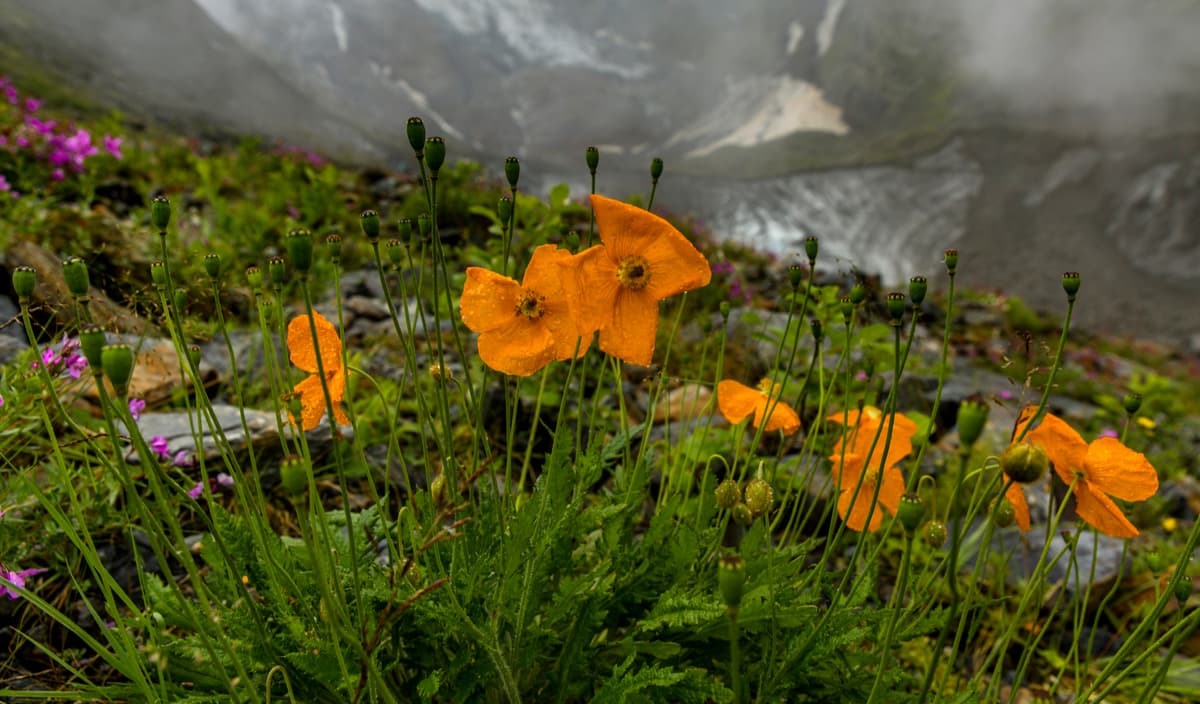
There have preserved the remains of ancient plants – ferns, dragon trees, etc. The woods occupy approximately 60% of the territory, there are over 50 species of medicinal herbs growing here as well.
The animal world is equally rich. There are 34 species of mammals, and the symbol of these lands is the East Caucasian tur (mountain goat). For 30 years, scientists have been monitoring the population of mountain goats to understand how the ecosystem of Alania National Park is developing. Rare animals feature the Caucasian leopard or the Persian leopard, the largest subspecies in the world. Predators used to be abundant in these places until the early 20th century. Then, people began to develop these lands, and leopards were massively hunted.
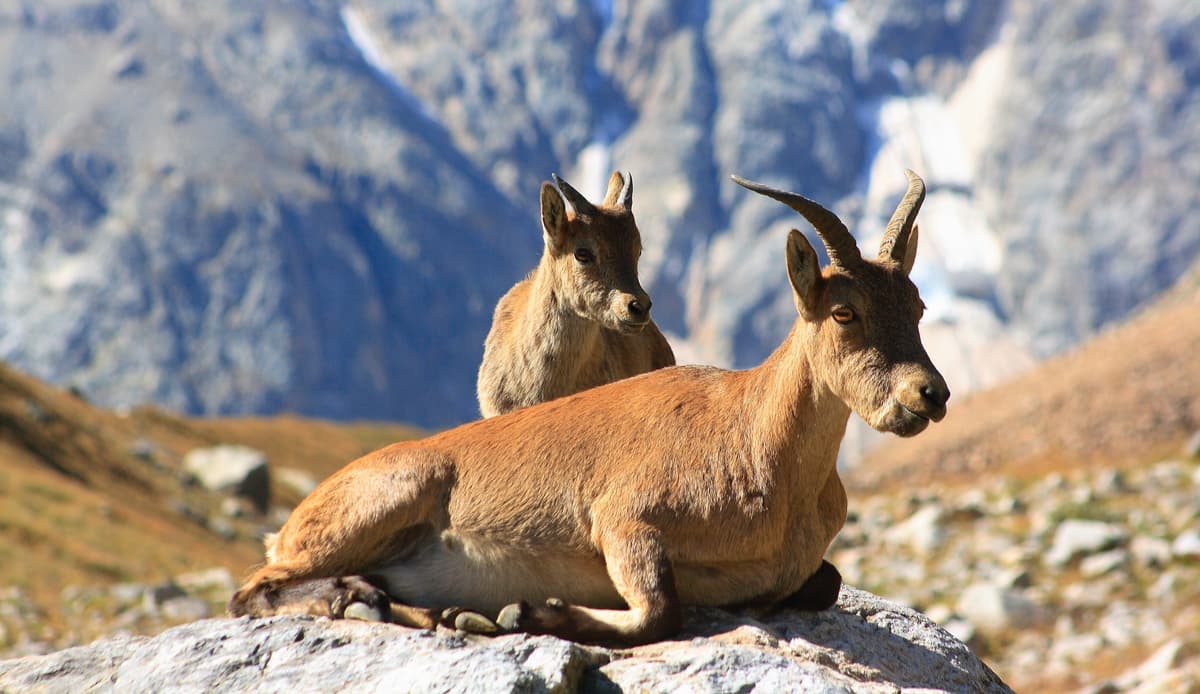
In 2007, there was launched a program to restore the number of leopards, and for this purpose purebred leopards were collected from zoos and brought to the Alania Park nursery where the scientists had created conditions for living and breeding. Once the cubs are grownup enough, they are released into the wild.
There is a Caucasian subspecies of chamois in the mountains as well. In mixed forests, there are roe deer, yak, wild boar, and brown bear. The most common of the park's small predators is the fox; in the forests and in the rocky belt, there live forest and stone martens, ermines and Altai squirrels.
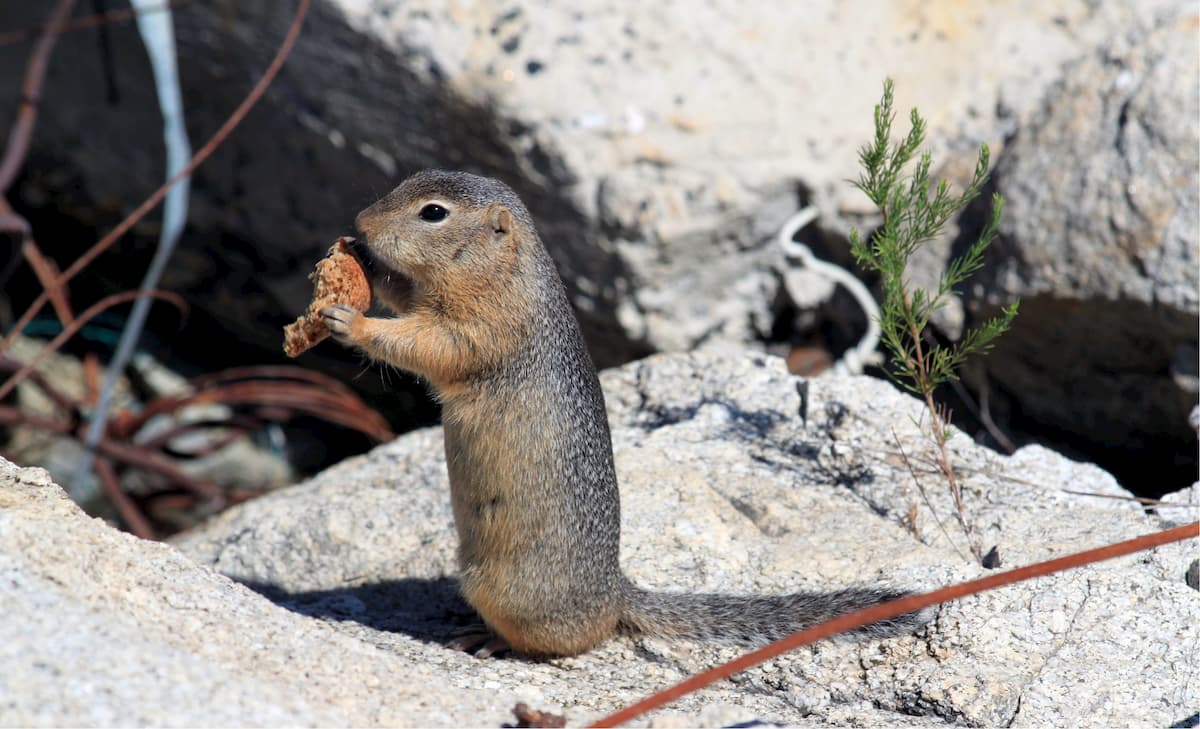
The park has long been famous for its waterfalls. The largest of them are located high in the mountains, close to glaciers. Some of them reach a height of 100 m. The most famous are the following:
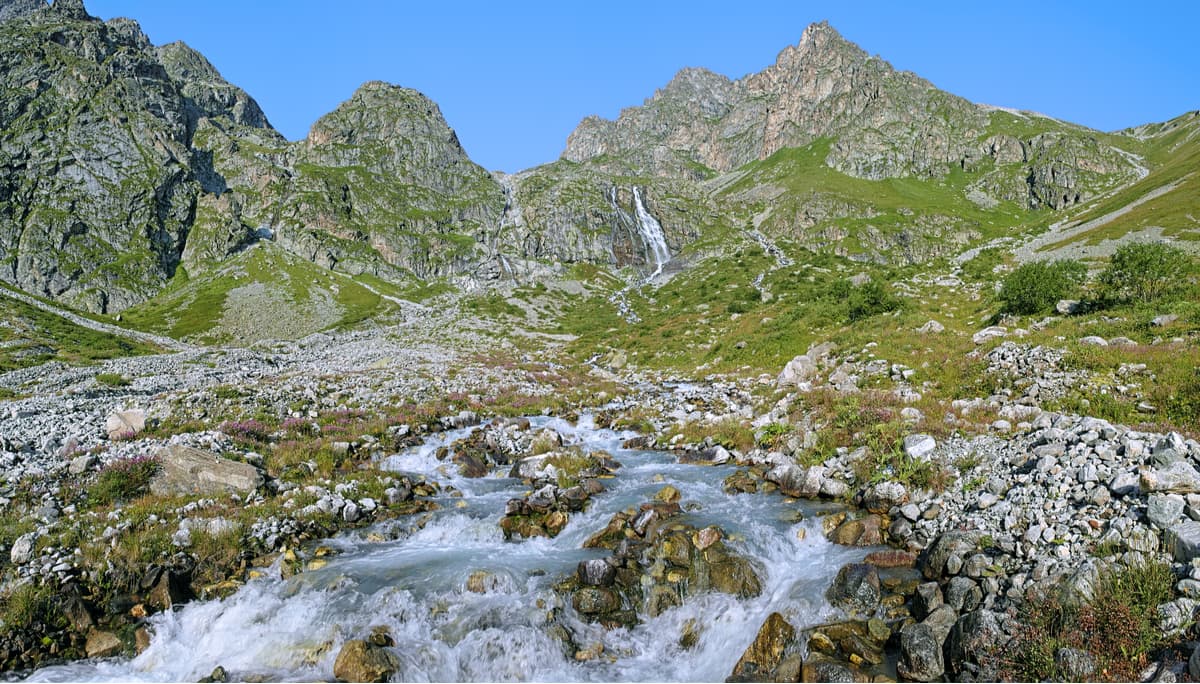
The lakes in the park are small, usually of glacial origin. The most famous of them are the Fastag, Mikelai, Gular and Donisar lakes. Some of the lakes are temporary, formed in summer during the melting of glaciers.
Wilpata (4,649m) is the third highest peak in North Ossetia after Kazbek (5,033m) and Dzhimara (4,780m). It is situated in a powerful ridge that separates the large glaciers of North Ossetia – the Tseisky and the Karaugomsky (aka Karaug). It can also be seen from the neighbouring Digorsky Gorge. There are 12 mountaineering routes ranked from 2B to 5B. Hanging glaciers, rockfalls, numerous grottos, failures, caves, funnels are the luring traps of this peak.
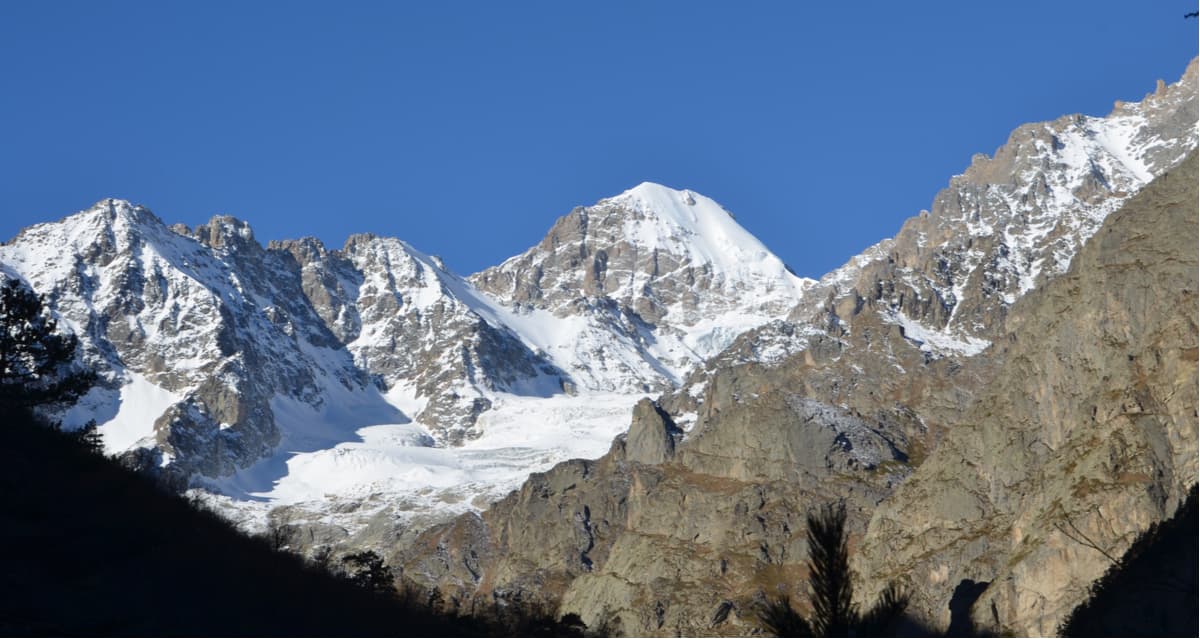
Laboda (4,311m) is called the crown of the Mountainous Digoria. It is located between the Shtula pass in the west and the Karaugomsky glacier in the east. Laboda is composed of crystalline rocks, its slopes are eroded by various cirques, cut by deep cracks and avalanche chutes. The Masota glacier is located on the mountain, it is the origin of the Urukh River. The southern border slopes of the mountain belong to the territory of Georgia. Together with the peaks of Tsiteli and Bezymyannaya, it forms a huge massif in the form of a pedestal.
Cihvarga (3,860 m) is located on the border of North Ossetia and Racha, Georgia. It is surrounded on all sides by glaciers, the largest of which is Bartuy, which gives birth to the river of the same name, a tributary of the Karaugom River. The ice fields are crouching over the alpine meadows, which creates a uniquely contrasting and colourful picture. There is an amazing Lake Mascutitzad in the point where meadows and ice meet.
The Alania National Park can boast of many well-preserved historical monuments. Since ancient times, men used caves and rock grottos and canopies for settlements, which are especially numerous on the Rocky Ridge (not the US one). In the vicinity of the Zadalesk village, there is a famous cave Digori Izad (Angel Digori), where a large collection of horns and skulls of both wild and domestic animals is preserved, which is of great scientific value. At the bottom of the cave during excavations, there were found fragments of iron arrowheads, a pendant of made of deer teeth, bones of animals, birds and fish. According to scientists, the cave could have been inhabited since the Paleolithic times and has served as a sanctuary since then. Some caves were fortified with stone walls, as in the village of Lezgor. The Alanian catacomb burials are found in the villages of Donifars and Kumbulta.
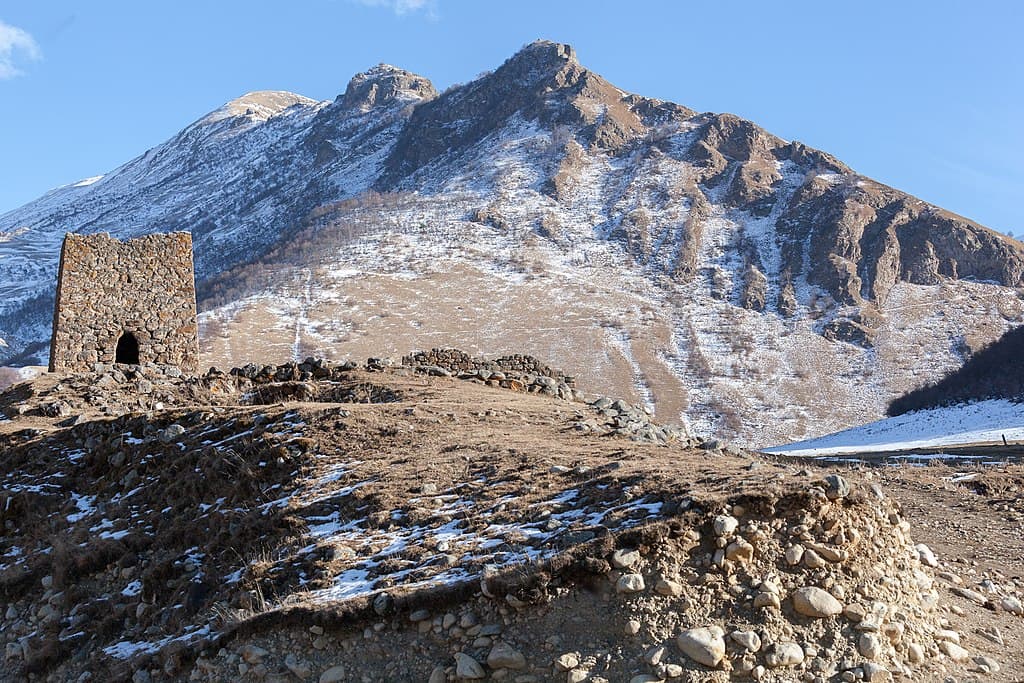
Medieval towers (Sedanovs' Tower), residential and defensive fortifications (White Greek Castle, Castle-Frigate in Khanaz, monuments of Kumbulta and Lezgor villages), sanctuaries (Satayi Obau Church) are still dominating the landscape of the protection zone of Alania National Park and adjacent territories. Some villages (Matsuta, Galiat, Dzinaga, Fasnal, etc.) still have medieval burial vaults.
The main attraction of the Park is definitely the Nature:
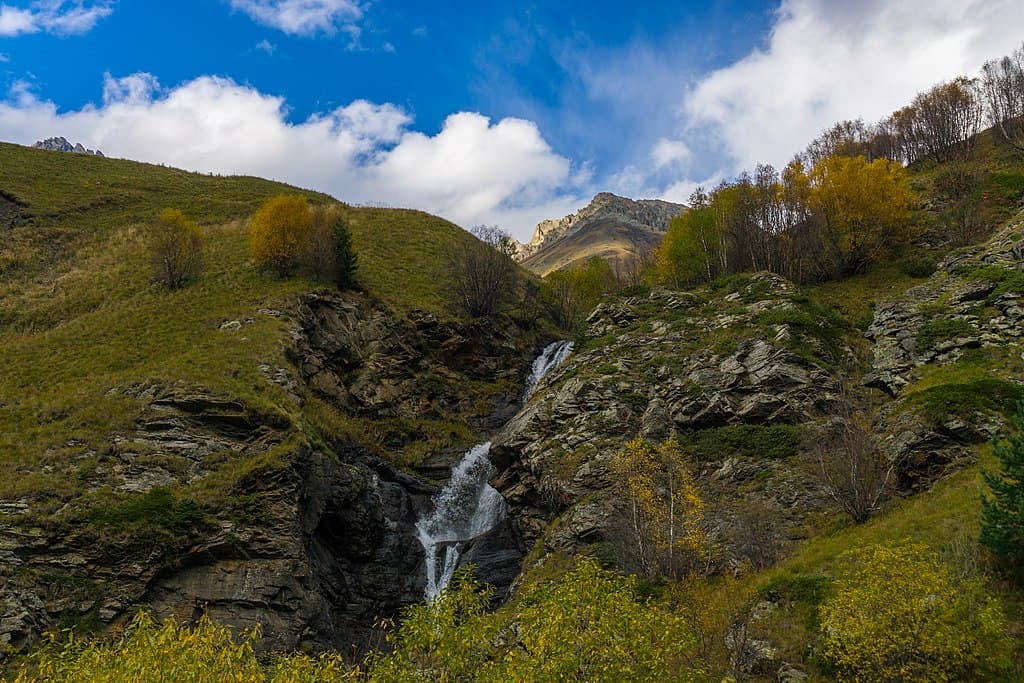
Other landmarks include:
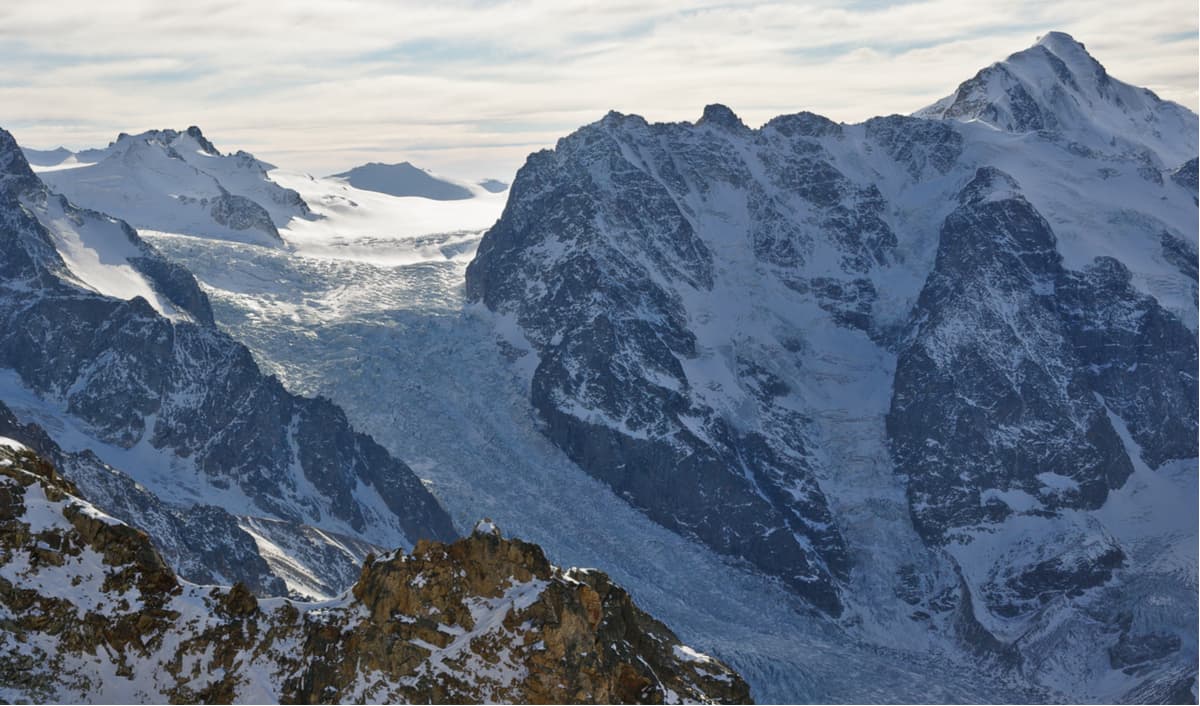
The National Park offers tours for groups in the Aygamughidon and Kharress Gorges. Visitors can also stop at recreation centres and camps. There are routes covering gorges and passes.
On the territory of the national park, there are several tourist bases, each in a picturesque place with a panoramic view of the surrounding mountains. All tourist bases except Dzinagi are located in the village of Stur-Digora. They offer hot meals, as well as sightseeing programs in the Alania park.
The majority of tourist routes are radial meaning tourists can leave the base for a day to some destination of interest, and return for the night.
In addition to standard walking tours, more specialized programs are available. Mountain climbers can conquer the peaks of Wilpata (the highest point of the national park) and Laboda (4,313 m). There are mountain bike trails and horseback riding tours. In the summer, you can go rafting on mountain rivers and do some mind-blowing paragliding.
Tourists who prefer a quiet, contemplative holiday can stay in one of the mountain villages in special agricultural estates. In a stylized peasant house, one can plunge into rural life of the Ossetians.
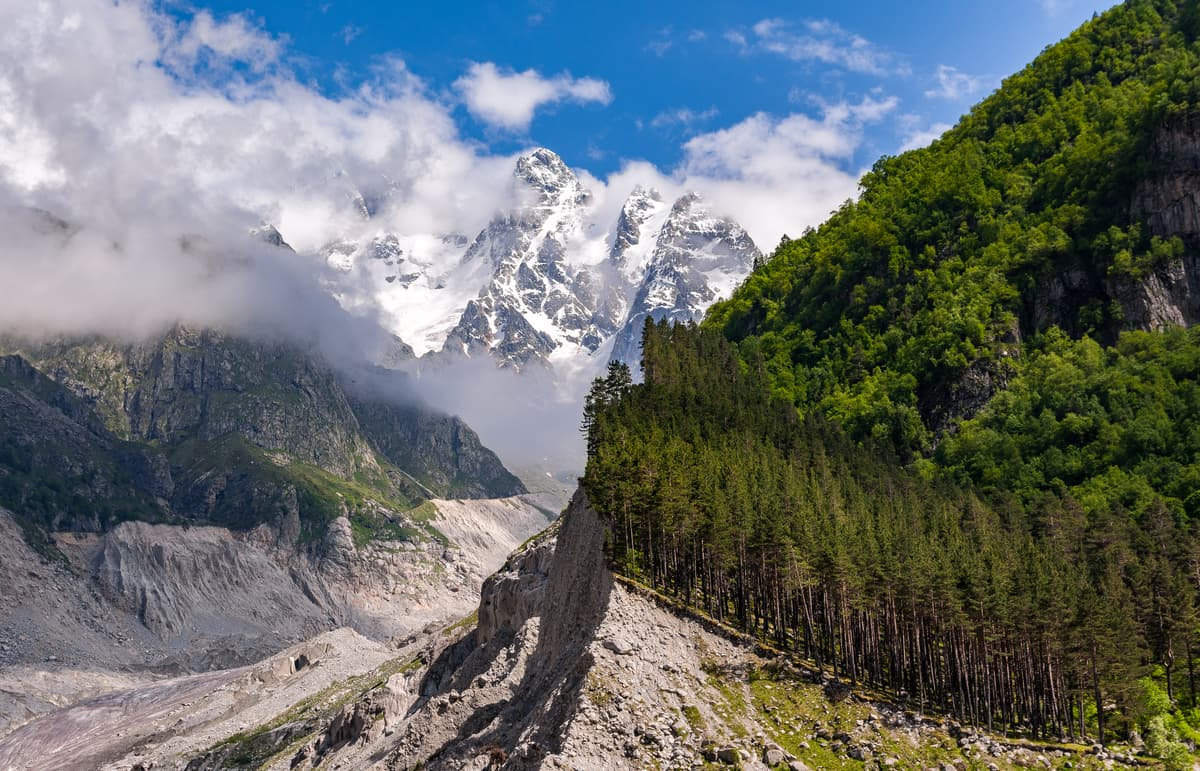
Tour guided routes include:
The Karaugom Glacier, 16 km long. The route runs through forest, subalpine and alpine landscapes, the difference in absolute altitudes is 1200-2200 m above sea level. Sightseeing spots are the Fatanta glade, funerary (crypts) and household buildings of the village Dzinaga, Karaugom pine wood, spring Uazal Saudon; rocks Lamb's foreheads, classic location of Bush's bedstraw, a Paradise glade, the Fastaga lakes, view on the Karaugom glacier.
Khekor route is 2.5 km long. It connects the ancient villages of Matsuta and Makhchesk, an absolute height difference is 1100-1250 m above sea level. Sightseeing spots feature common hop-grab (a rare species, listed in the Red Book of RSO-Alania), the Soslan crypt, the Abisalov tower, the Nargy sanctuary.
The Galauz Falls (Muktsa-Tsuhtsuraga) is 3 km long. Sightseeing features traditional vaults with horizontal and vaulted ceilings, the Mindzayev Tower, the Tsakoyev Tower, an old water mill, ruins of old miner’s houses, abandoned mines, waterfalls.
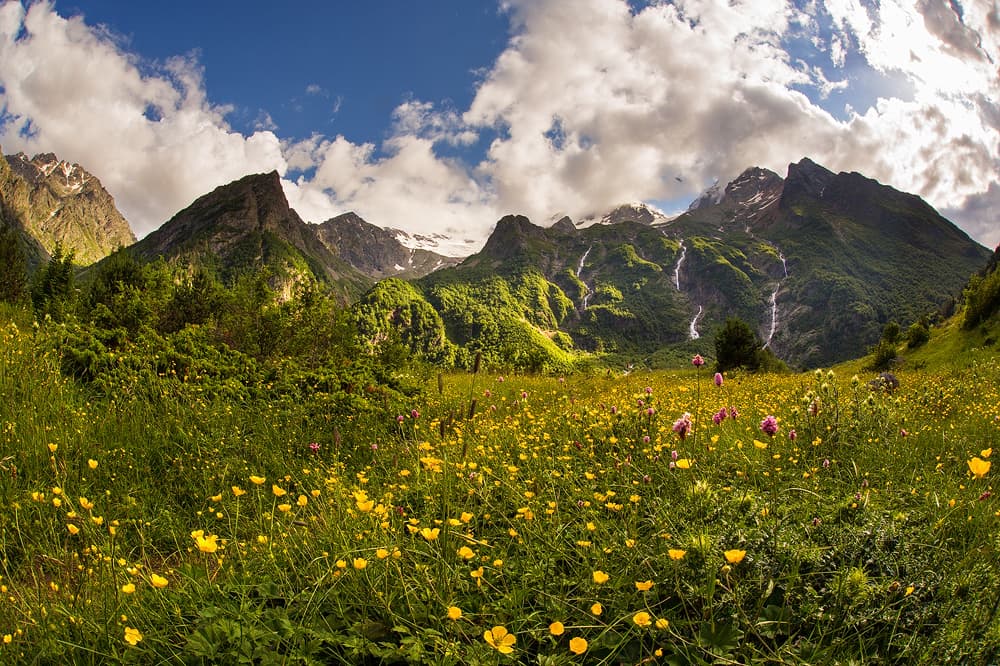
Kubusskaya round-the-world trip is just 8 km long. It is a ring-route around the town of Kubus, the height difference is 1720-2340 m above sea level. Sightseeing includes the Bayradi waterfall, a geological adit, juniper dwarves, a view of the Hebidon river valley, the Taimazi glade, a view of Dashikhonkh mountain, the Taimazi waterfalls Three Sisters, an observation deck at the confluence of six rivers, a molehill (not that made by a common mole, but a much bigger edifice), a panorama of the Taimazi massif, a canyon of the river Tanadon, a large rockfall bed with a giant boulder, a subalpine beech forest with an admixture of birches, and the Kubus (Tanadon) peat bog.
Mount Kubus route is 3 km long with the height difference 1830 - 2340,9 m above sea level. Sightseeing spots include neotectonic faults, wind gorges, relict plant thickets of scouring rush (Equisetum hiemale), groundwater outcrops, a spring, the Kubus (Tanadonsky) peat bog, fragments of the left-bank moraine of the ancient Tanadonsky glacier, hanging slope peat bog, a relict pine forest.
The Tana Glacier route is 8 km long. It passes through a unique mountain forest, subalpine and alpine landscapes with ancient monuments, the height difference is 1830-2500 m above sea level. Attractions feature wind gorges, relict plant thickets of scouring rush (Equisetum hiemale), groundwater outcrops, a spring, giant boulders and an old cattle shed, rock outcrops with quartz veins, birch trees with 10 or more trunks, a glacial boulder with a spring beating under it, ruins of shepherd's shed, some geomorphological forms of the relief called lamb's forehead, young birch trees as an example of vegetation revival after the landslides, avalanche remains, an abundance of very photogenic stones and boulders of various sizes, many flowering plants, mineral water outlet, complex glaciers of the Tana.
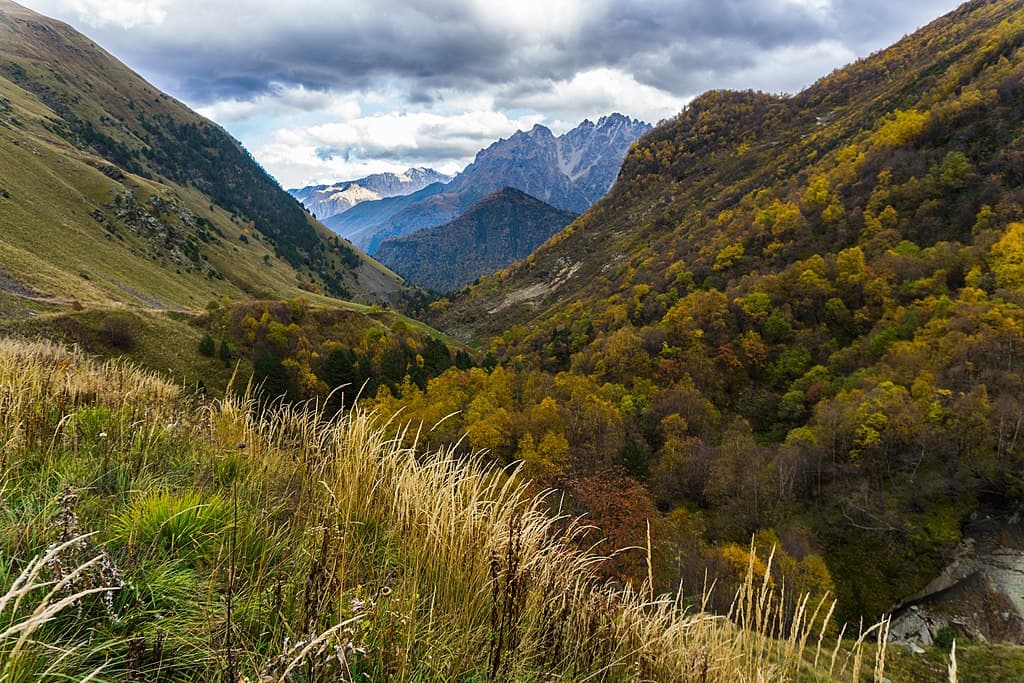
The Galdoridon Falls route is 3 km long. It begins on the left bank terrace of the Haressidon River, runs along the beginning of the Haress Canyon to the Galdoridon Falls, the height difference is 1800-2000 m above sea level. Sightseeing features five cascade waterfalls, a canyon of the river Haressidon, meadow glades, in some places with outcrops of moist oozing rocks; a giant boulder of glacial (erratic) origin, the Devil's Mill Waterfall, a natural stone bridge formed as a result of the rockfall, some cutoffs of turf on the slopes as the result of the anthropogenic intervention, the Galdoridon Falls.
Up the Bilag Gorge route is 15 km long. It goes through the Bilag Gorge – one of the most beautiful gorges of the mountainous Digoria, the height difference is 1300-2020 m above sea level. Sightseeing spots start with village Akhsau, there are many cites semi-subterranean crypts there. There are 10 shafts of former end moraines covered with strongly transformed vegetation, the Akhsau springs, traditional shepherds' and hunters' camps, typical alpine and subnival vegetation (this is the highest zone that vegetation can exist), a huge stone boulder made of 7 parts with very smooth cuts, which is called The Seven Brothers.
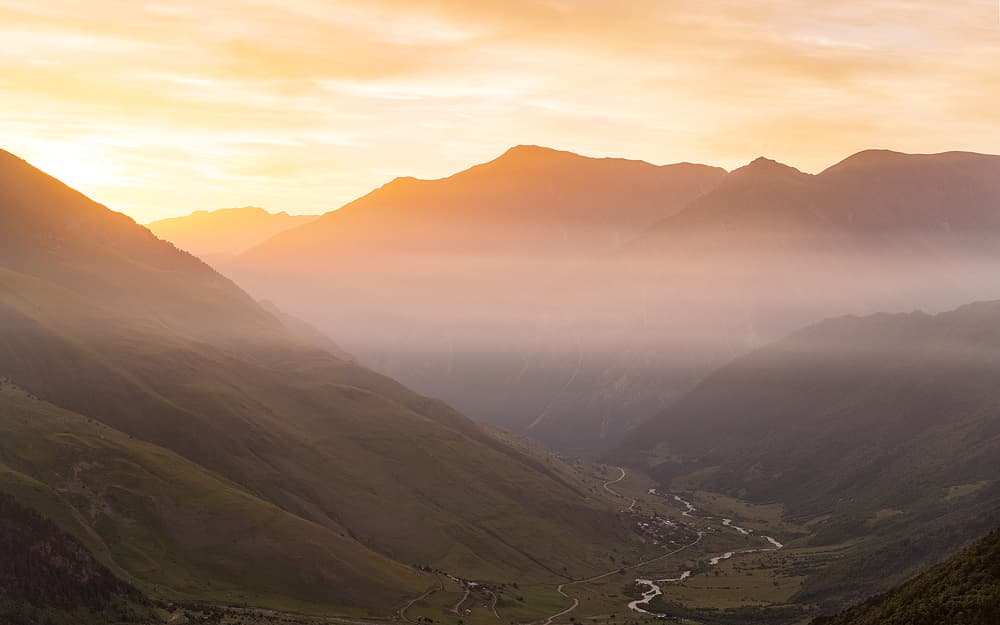
The Chifandzar Swamp route is 4 km long. It runs along a very steep slope above the river Haressidon and thickets of prickly bushes, the height difference is 2200-2450 m above sea level. You will see the Galdoridon Falls, a vast removal cone with giant boulders, the largest stone fence in the gorge, the Chifandzar moraine, cattle camps and kurumniks – stone seas, mountain colourful meadows, suspension stone mushrooms, a Narzan mineral water spring Astavdort, and the Chifandzar mountain peat bog of lake origin.
The hunting grotto in Gurmastenta route is 4 km long. The route goes westwards, upstream of the Haressidon River, along its right bank and ancient terraces, the height difference is 2100-2400 m above sea level. You will enjoy granite blocks covered with lichens, a glade with molehills, a spring with a spring funnel, giant marsh marigolds, cow parsnips (beware not to touch it, it causes chemical burns on the skin, which are considered to be worse than those from napalm), aconites, collapsed granite blocks and mixed subalpine birch wood.
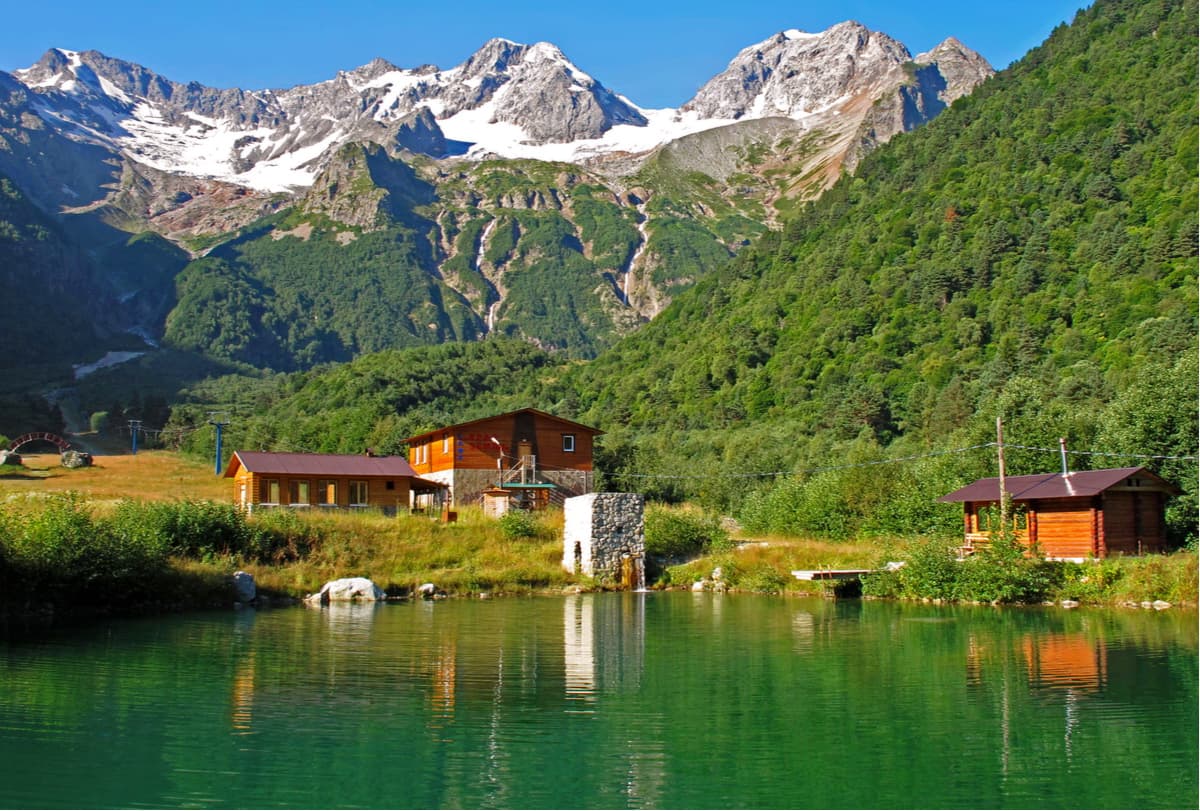
The national park is located in the south-western part of North Ossetia. The distance from the Republic's capital, Vladikavkaz, is about 120 km. The tourist cordon is in the settlement of Matsuta. Then there is a narrow road along the Akhsinta canyon. So, get to Vladikavkaz by train or by plane, then take a bus (a shuttle taxi) to Chikola village. In agreement with the Park administration, you can order a transfer directly from the airport or railway station from Beslan to the park manor.
Addresses 362000 Vladikavkaz, Gagarin Street 28-30 RSO-Alania Telephone: +7 (867) 240-5214
363500 North Ossetia Irafsky Region, village Kamata RSO-Alania Telephone: +7 (867) 343-1031
е-mail: npalania@mail.ru npalania-turism@mail.ru - Tourism Department npalania-pr@mail.ru - Mass Media and PR Department
Vladikavkaz is the capital of the Republic of North Ossetia-Alania, one of the most beautiful cities in the North Caucasus and a major industrial, scientific and cultural hub of southern Russia. It is situated on the northern slopes of the Central Caucasus, at the foot of rocky massifs and snowy mountains, on the banks of the stormy Terek River.
Explore Alaniya National Park with the PeakVisor 3D Map and identify its summits.








top50
glacier
europe-4500ers
caucasus-4500ers
top50
glacier
europe-4500ers
caucasus-4500ers
